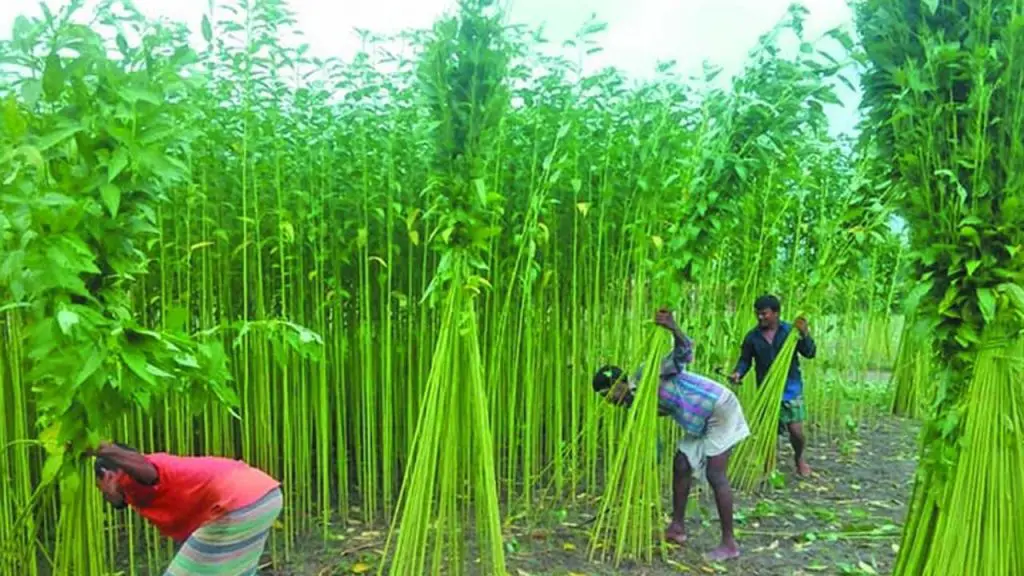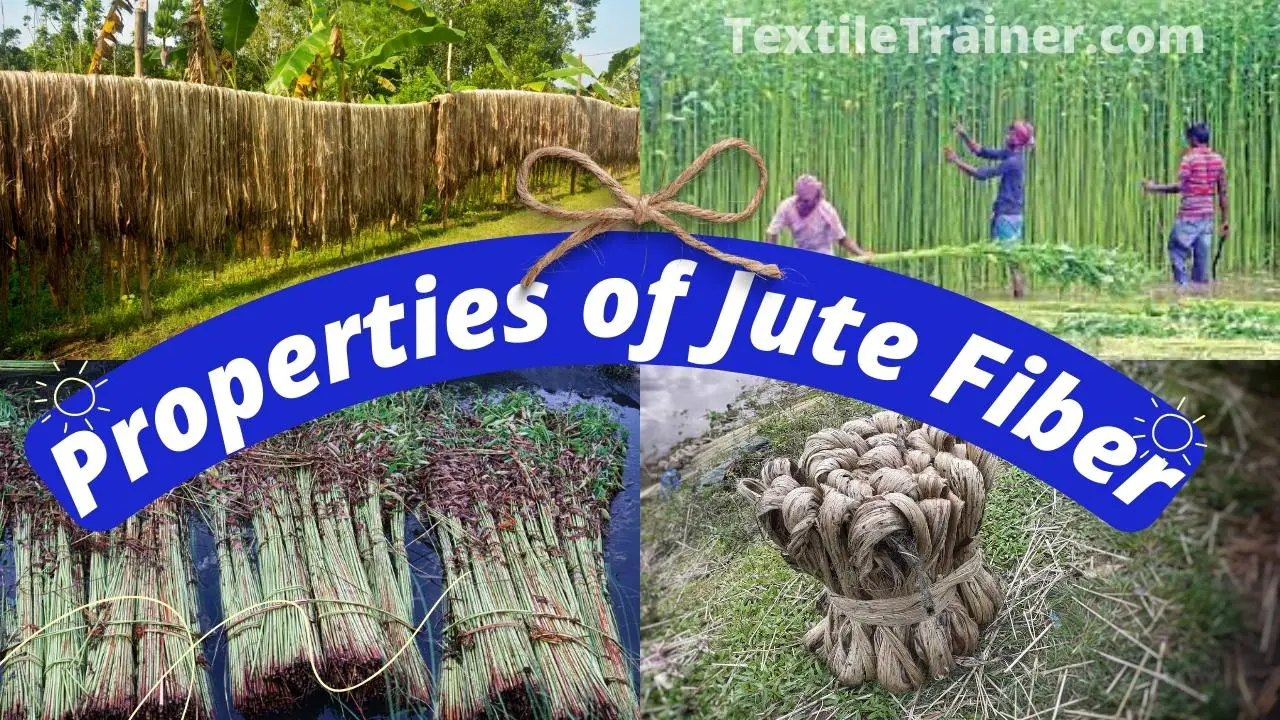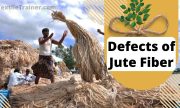Introduction:
A key advantage of jute fiber is its high tensile strength, which allows it to resist stress and avoid breaking under tension. Most important properties of jute fiber is eco-friendly natural. In addition, jute is excellent at insulating against heat and sounds, making it suitable for thermal regulation and noise-dampening applications. As a result of its breathability and moisture absorption abilities, it is comfortable to wear and helps regulate humidity levels. Its biodegradability makes it a natural fiber that can break down naturally without harming the environment.
In contrast to synthetic fibers, which persist in the environment for a long time, it is an environmentally friendly choice. The versatility and adaptability of jute make it easy to spin into yarns, weave into fabrics, or blend with other fibers to enhance its properties. Jute is also relatively inexpensive when compared to many synthetic fibers.
Moreover, jute is a sustainable and renewable resource that is harvested within a short period, requiring minimal chemical inputs and fertilizer. In general, jute fibers are suitable textile, packaging, rope and geotextile materials because they are strong, insulating, breathable, biodegradable, versatile, cost-effective, and sustainable.

The purpose of this article is to describe the properties of jute fiber in terms of their physical, mechanical, and chemical properties.
Physical Properties of Jute Fiber:
- Appearance under the microscope: Individual fibres of jute display nodes and cross markings from a longitudinal perspective and polygonal shapes from a cross-section perspective. The lumen is wider and more constrictive (irregular thickness) than the cell wall. Lumen broadens at the fibre end, making the cell wall extremely thin. Externally, the fibre is smooth and lustrous.
- Ultimate fiber length and diameter: Depending on a number of factors, including the jute variety, growing conditions, and processing methods, jute fiber can have varying lengths and diameters. A jute fiber’s ultimate diameter ranges from 0.015 mm to 0.002 mm, while its ultimate length can range from 1.5 to 4 mm.
- Length of technical fiber: The technical length of jute fiber refers to the average length of the fiber strands before they are further processed or cut. Jute fibers usually range between 150 and 300 centimeters or 5 and 12 feet in length. It’s important to note that jute fibers are often cut into shorter lengths during processing, such as spinning and weaving.
- Length width ratio: The length-to-width ratio, also known as the aspect ratio, refers to the ratio between the length and width of a fiber. In the case of jute fiber, this ratio varies depending on the variety and processing method used. On average, though, jute fibers have a length-to-width ratio of approximately 90:1.
- Color: Jute fibers often have a natural color that is blonde, white, yellow, brown, or grey. Each of these colors is a result of the plant’s natural pigmentation. However, jute fiber can be easily dyed or bleached in order to achieve different shades or colors based on individual requirements or tastes.
- DP of jute fiber: The degree of polymerization of jute fiber refers to the average number of monomer units (in this case glucose units) that make up the polymer chains within the fiber. In jute fiber, there are three major chemicals. These are cellulose, hemicellulose and lignin. The DP of cellulose is 500-2000, the DP of hemicellulose is 50-200, and the DP of lignin is variable, not fixed.
Mechanical Properties of Jute Fiber:
- Strength: The tensile strength of jute fiber, which refers to a material’s ability to resist breaking or elongation when stretched under tension, is one of its strongest features. The tensile strength of jute fiber is relatively high, so it can be used for a variety of applications that require strength and durability. The tensile strength of jute fiber is between 3.5 and 5 grams/denier.
- Specific gravity: A material’s specific gravity is determined by its density relative to a reference substance. It is a measure of its relative weight relative to water. Jute fiber is typically around 1.30-1.48 specific gravity.
- Specific heat: Basically, the specific heat of a substance is the amount of energy it takes for a certain amount of heat to be transferred from one unit mass of that substance to another unit mass of that substance. The specific heat of jute fiber is 0.325.
- Breaking Extension: The breaking extension, also known as elongation at break or strain at break, refers to the percentage increase in length that a material undergoes before it breaks or fractures under tension. The breaking extension of jute fiber is 1.8%. It is a measure of the material’s ability to deform or stretch before it reaches its breaking point.
- Moisture content and regain: In moisture content, water or moisture is expressed as a percentage of the weight of a material, while moisture regain refers to a fiber’s ability to regain moisture from its surroundings. A jute fiber’s moisture content is 12.1% and its moisture regain value is 13.75 %.
- Elasticity: The elastic properties of a material describe its ability to deform when under stress, and then to return to its original shape after the stress has been removed from it. An elastic material is one which can stretch or compress, and then return to its original dimensions once it has been stretched or compressed. Jute fiber is very low in elasticity.
- Resiliency: The term “resiliency” refers to the ability of an object to return to its original shape or form once it has been deformed or compressed. The resilience of jute fiber is a measure of its ability to bounce back or return to its original state after it has been distorted. The resiliency of jute fiber is not very high.
- Abrasion resistance: There are several factors that determine a material’s abrasion resistance, including its ability to resist wear, rubbing, and friction without significant damage or deterioration. Abrasion resistance refers to the degree to which a material can resist surface abrasion or erosion when repeatedly contacting another surface. Jute fiber has a moderate level of abrasion resistance.
- Dimensional stability: A material’s ability to maintain its original dimensions and shape when exposed to various environmental conditions or external forces is known as its dimension stability. A material’s dimensional stability is determined by how well it resists changes in size, shape, or dimensional stability due to factors including moisture, temperature, and mechanical stress. Jute fiber has good dimensional stability.
- Thermal insulation and conductivity: This fiber has excellent thermal insulation properties, allowing it to resist the transfer of heat to a considerable degree. It has also a relatively low thermal conductivity, which means that it does not conduct heat readily. This property makes jute fiber ideal for applications requiring thermal insulation.
Chemical Properties of Jute Fiber:
- Action of acid: When jute fiber comes into contact with acids, it undergoes chemical reactions that can cause damage or degradation to the fiber. The extent of the reaction is dependent on the concentration and type of acid used, as well as the duration of exposure. Oxalic acid, formic acid, sulfuric acid, and hydrochloric acid are all mineral acids that don’t react at ordinary or cold temperatures. At boiling temperatures, strong acids form hydrocellulose.
- Action of alkalis: Jute fiber can become swollen, weak, and more vulnerable to breaking when alkalis are applied to it. In addition to breaking down the cellulose chains, the alkali can also cause the fiber structure to degrade. In this case, the fiber loses its structural integrity and becomes weaker. Strong alkalies degrade its strength. Jute loses weight when boiled with diluted caustic soda, due to the removal of hemicellulose.
- Effect of bleaching agent: In the process of bleaching, oxidizing agents are used to remove colorants or impurities from fibers, including jute fibers, using a chemical treatment technique. There are several factors that influence the effects of bleaching on jute fiber, including the specific bleaching agents used, the concentration and duration of the bleaching process, and how the bleaching process is conducted. The bleaching process of jute fiber can be affected by either oxidizing or reducing agents.
- Action of micro-organism: Based on the type of microorganism and the environment in which it is found, microorganisms can affect jute fiber in different ways. The lignin present in jute fiber provides a protective effect on the fiber if it is slightly scoured. If the fiber is slightly scoured, it will have excellent resistance to microbiological attack. It is common for jute fabrics to be treated with cuprammonium solution, then dried, thereby creating a film of green color on the fabric. This film makes the material more or less rot proof.
- Action of sunlight: When exposed to sunlight for a prolonged period of time, jute fiber can suffer significant damage. UV radiation, in particular, can cause fibers to deteriorate. UV radiation can cause jute fibers to undergo structural changes and chemical breakdown. As a result of colour changes within the fiber connected with lignin molecules, jute gradually adopts a yellowish hue when exposed to sunlight.
- Action of heat: Jute fiber can be affected both positively and negatively by heat, depending on the temperature and duration of exposure. Generally, Jute, like other textile fibers, does not degrade when heated.
- Dyeability: In contrast to other fibers, jute fiber is moderately dyeable, meaning it can be dyed in a variety of colors, but it may take some special dyeing techniques and processes when dyeing it. As a matter of fact, jute’s dyeability is primarily due to its high cellulose content, which allows for the absorption and retention of dyes, but jute fiber also has good dye affinity, but it is not very light and wash fast.
Favorable Properties of Jute Fiber:
- Good antistatic property is one of jute fiber’s most important features
- It has good insulation capacity.
- It is characterized by low thermal conductivity.
- The amount of moisture that has been regained is moderate.
- Jute has good acoustic insulating properties.
Disfavor-able Properties of Jute Fiber:
- It has a poor sheet ability and crease resistance.
- A second problem is brittleness
- A third reason is fiber shedding and yellowing when exposed to direct sunlight.
- The strength of jute decreases when it is wet.
- In humid climates, this product becomes susceptible to microorganism attack.
Conclusion:
The unique properties of jute fiber make it highly versatile and valuable in many fields. In addition to its natural golden shine, high tensile strength, and biodegradability, it is also a good natural alternative to synthetic fibers. Providing excellent thermal and acoustic insulation, jute blends well with other materials, enhancing its versatility and increasing its applications. Furthermore, its breathability and moisture absorption properties make it ideal for textiles and packaging materials.
Reference:
- Textile Science by E.P.G. Gohl, L. D. Vilensky
- Handbook of Textile Fibers, Vol II, JG Cook, 5th Ed, Woodhead, UK, 2009.
- Physical Properties of Textile Fibres (4th Edition) By Morton &Hearle
- Dr. Hosne Ara Begum, P. D. (n.d.). Natural fibers. Dhaka: Hafiz book center.
- Hossain, M. S. (2014). Introduction to Textile Engineering. Dhaka: Books Fair Publications.
- Majumdar, B. (n.d.). Microbial Retting of raw jute. Kolkata: CRIJAF.







Fantastic blog article. Fantastic.